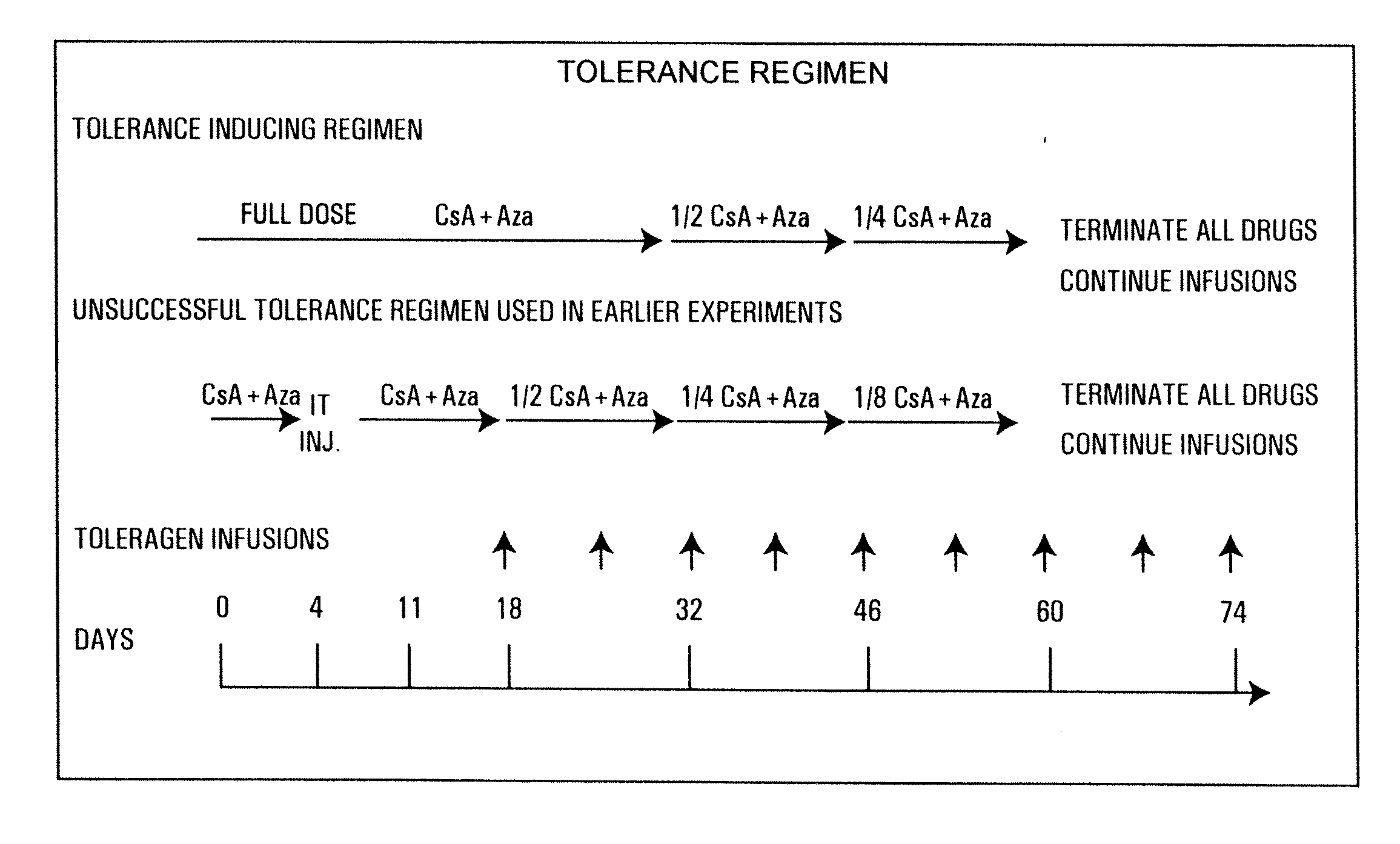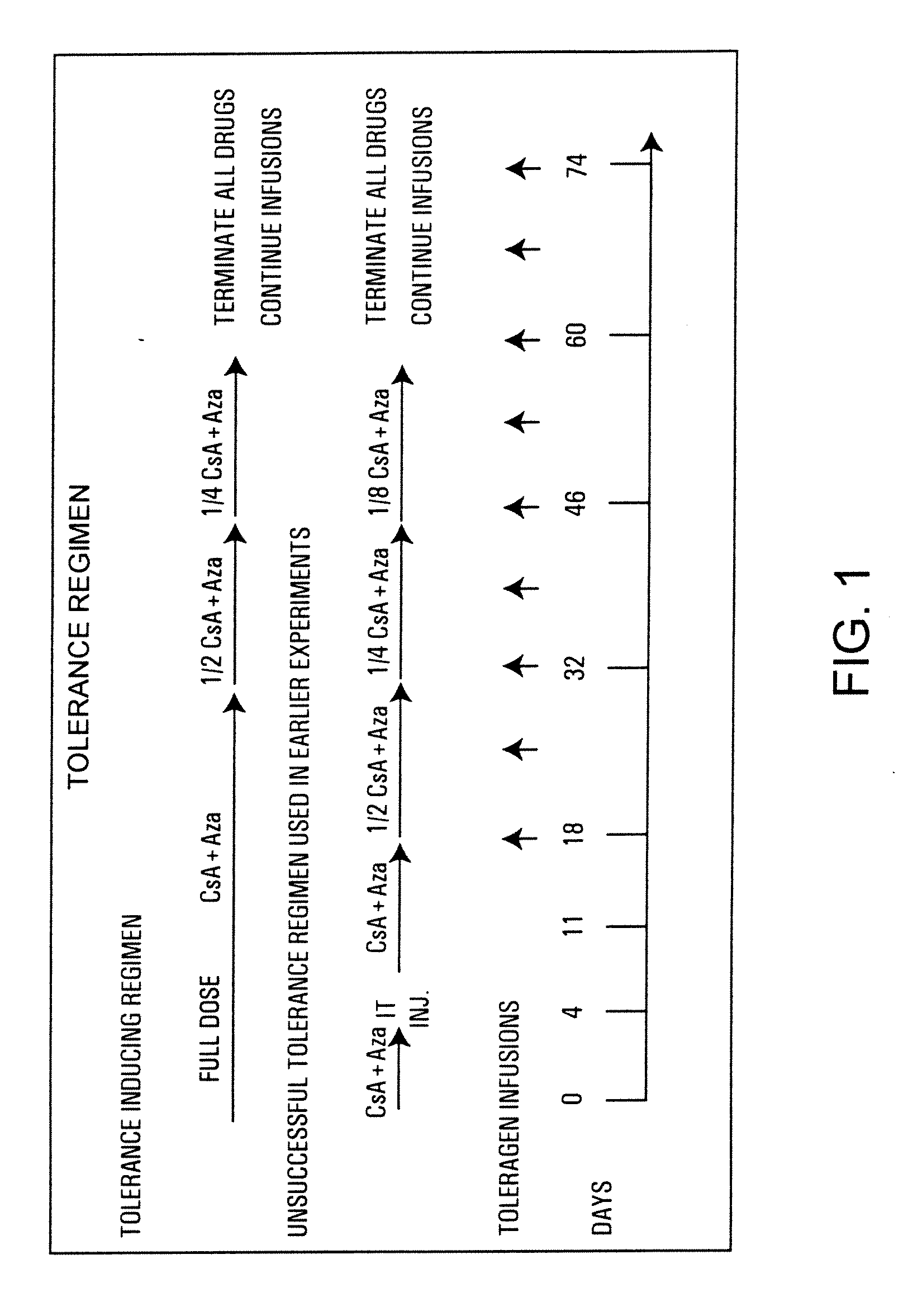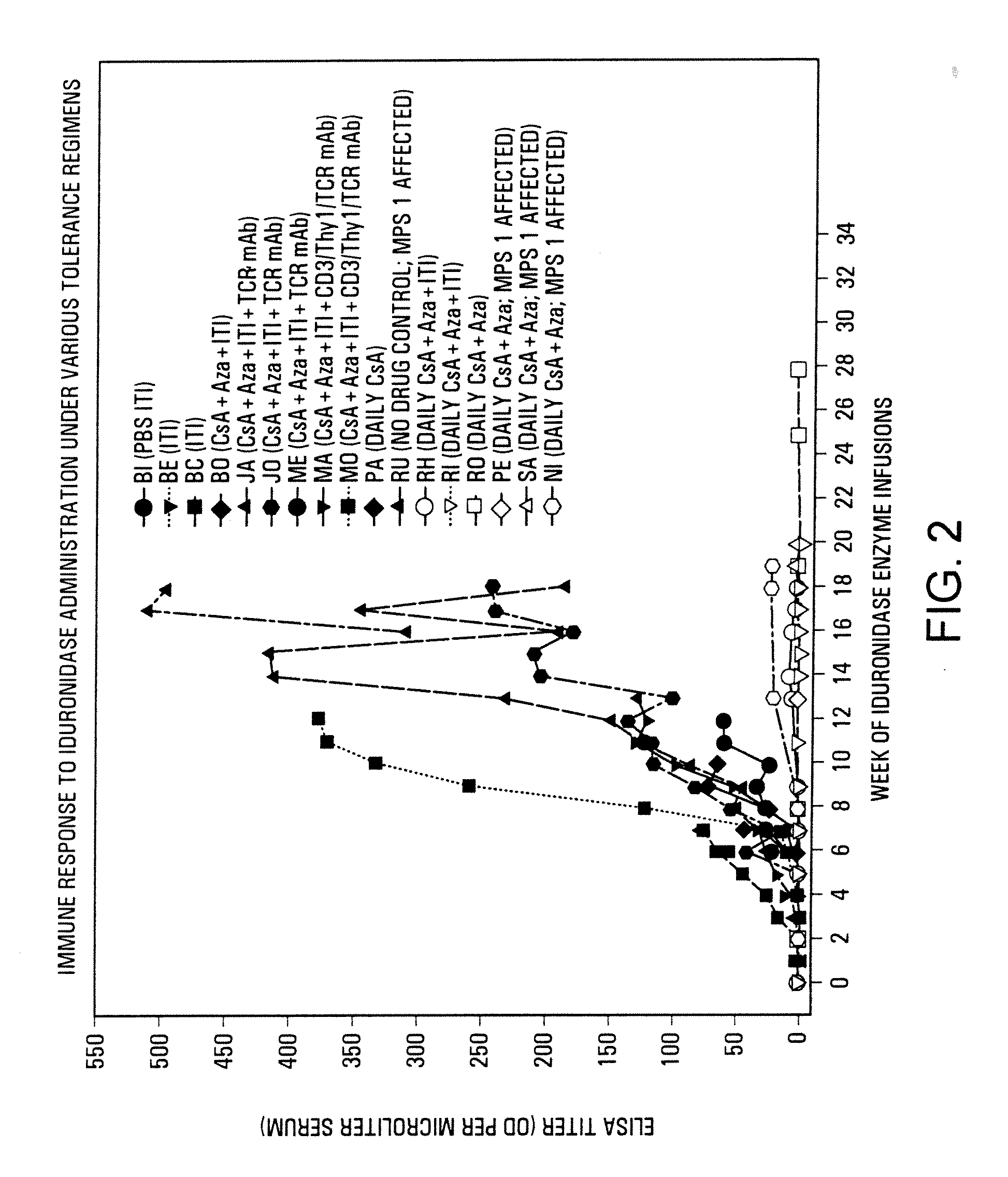Induction of Antigen Specific Immunnologic Tolerance
a technology of immunnologic tolerance and immunization, which is applied in the field of induction of antigen specific immunnologic tolerance, can solve the problems of reducing the efficacy of the therapy, affecting the treatment effect, so as to improve the tolerability and tolerance, increase the uptake moiety, and improve the effect of tolerability
- Summary
- Abstract
- Description
- Claims
- Application Information
AI Technical Summary
Benefits of technology
Problems solved by technology
Method used
Image
Examples
example 1
Induction of Tolerance to Human α-L-iduronidase in Normal and MPS I Dogs
[0098]Mucopolysaccharidosis I is a genetic condition caused by mutations in the alpha-L-iduronidase gene leading to a deficiency in the enzyme iduronidase. This deficiency leads to a progressive multi-system lysosomal storage disorder that includes coarsened facial features, large tongue, large liver and spleen, respiratory problems, heart problems, joint stiffness and bone disease. The disease leads to death in patients usually in their first or second decade of life.
[0099]The deficient enzyme iduronidase is a lysosomal hydrolase that cleaves the terminal iduronide residue of heparan and dermatan sulfate. The enzyme can be made in recombinant cells and is produced with a mannose 6-phosphate marker on post-translationally attached carbohydrates, which is important for its uptake into cells. Enzyme replacement therapy has been proposed as a method of treatment, in which a recombinant form of the enzyme is adminis...
example 2
Induction of Tolerance to Therapeutic Iduronidase in MPS I affected Dogs and Maintenance of Tolerance During High Therapeutic Dose Infusions
[0134]Induction of tolerance must prevent a clinically significant immune response to the therapeutic protein to be useful in the clinic. MPS I canines on enzyme replacement therapy with iduronidase respond with high-titer antibodies that delay clearance or alter the stability of the enzyme, prevent uptake of the enzyme and likely limit the efficacy of the enzyme therapy. The same phenomenon has been reported in other animal models.
[0135]To study whether naïve MPS I canines can be tolerized to iduronidase and subsequently receive high dose therapeutic levels of enzyme on a weekly basis, a series of four MPS I affected dogs were tolerized (3 dogs) or kept as control (1 dog). After 12 weeks, the tolerant canines received an increasing weekly dose of iduronidase and finally received at least 6 weeks of therapeutic doses of enzyme, without a signifi...
example 3
Induction of Tolerance to Alpha Glucosidase
[0144]Induction of tolerance to iduronidase infusions has been demonstrated in normal and MPS I dogs using a regimen of daily CsA+Aza, followed by weekly infusions of tolerizing antigen while tapering the immunosuppressive drugs. To demonstrate that tolerance can be induced to another enzyme with high affinity uptake characteristics, recombinant human alpha glucosidase was prepared and studied with the tolerance regimen. Two normal canines were studied, one with the tolerance regimen and one control. Weekly infusions with glucosidase began and by week 3, the control dog had a rising immune titer. By week 5, the control dog a 100 fold higher titer, and the treated dog had no significant titer. The data shows that the tolerance regimen can be successfully used with other antigens.
Materials and Methods
[0145]Animals. MPS I dogs were obtained from the MPS I canine colony at Harbor-UCLA. The dogs are a cross between beagles and Plott hounds and a...
PUM
| Property | Measurement | Unit |
|---|---|---|
| concentration | aaaaa | aaaaa |
| concentration | aaaaa | aaaaa |
| OD | aaaaa | aaaaa |
Abstract
Description
Claims
Application Information
 Login to View More
Login to View More - R&D
- Intellectual Property
- Life Sciences
- Materials
- Tech Scout
- Unparalleled Data Quality
- Higher Quality Content
- 60% Fewer Hallucinations
Browse by: Latest US Patents, China's latest patents, Technical Efficacy Thesaurus, Application Domain, Technology Topic, Popular Technical Reports.
© 2025 PatSnap. All rights reserved.Legal|Privacy policy|Modern Slavery Act Transparency Statement|Sitemap|About US| Contact US: help@patsnap.com



